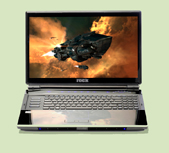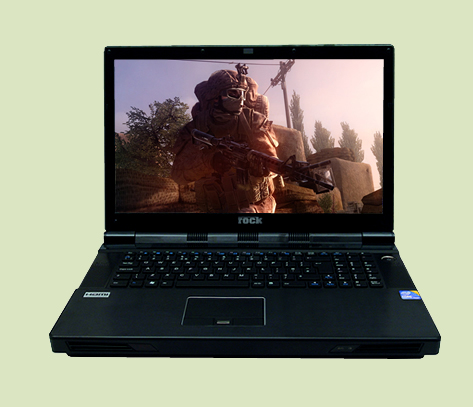Support / Jargon Buster D - F
A - C |
D - F |
G - I |
J - L |
M - O |
P - R |
S - U |
V - X |
Y - Z
DAT: Digital Audio Tape (DAT) is a compact, high capacity form of data storage, suitable for archiving or backing up large amounts of data.
Data compression: A process that reduces the amount of data needed to store or send a video or audio signal.
Data storage: Any type of information - words, figures, still or moving images, sound or music - can be coded into a single electronic form: digital. Once in digital format, all these types of material can be shared, copied, processed, indexed and transmitted from computer to computer, quickly and flexibly.
Database: A database collects information into an electronic file, for example a list of customer addresses and associated orders. Each item is usually called a 'record' and the items can be sorted and accessed in many different ways.
Dedicated server: A server which is used solely for use by one organisation. The server is leased and stored in the data center of the host company.
Desktop publishing: Desktop publishing (DTP) software was originally developed to allow computer users to create professional-looking newsletters, magazines and brochures, complete with pictures, diagrams and colour. Now that word-processing software can do most of these things, DTP software has become more of a tool for professional designers, though small companies often use DTP for producing newsletters and reports.
Digital certificate: An electronic statement issued by a certificate authority that verifies a company's identity by validating that company's public key.
Digital signature: A section of data appended to a message which authenticates the information. Signatures are encoded by the sender's private key and can then verified by the sender's public key. Any unauthorised changes to the file will be reported by an invalid signature for that file.
DIP SWITCH: Switch mounted on PC board for configuration options. For example some notebooks have dip switch settings so that the right speed of processor is detected. AMD capable notebooks especially have dip switch settings.
DIRECT X: This is an add-on to Windows made by Microsoft that allows programmers to communicate directly with the hardware. There have been several versions of Direct X. Version 6 is shipped out as standard on Windows 98. Version 8 is shipped out as standard on Windows XP. The latest version is DirectX 9b.
DIRECTORY: A “folder” that contains files on a computer disk. For example, you can make a directory called DOCUMENT on the C: drive. It will be called C:\DOCUMENT by DOS or WINDOWS. The root directory is the main one, which contains everything on a drive.
DLL: Dynamic Link Library is a collection of Windows programs that load into memory as required by the parent program
DMA: Direct Memory Access channels are set-aside to allow memory transfer without CPU intervention.
DOCKING STATION: A unit which can hold hard drives, CD-ROMS etc. Also has expansion slots for additional interface cards like SCSI cards. It has all the ports the notebook has plus a few extra. It turns the notebook into a desktop computer. Some have an additional platform so that an external monitor can be plugged in and rested on the platform.
Domain name: A convention used to allocate and structure the Internet hierarchy into meaningful sections. For example, at the higher level are the com, org, uk and net domains, which can then be broken down into further domains such as scottish-enterprise.com, scotent.co.uk, etc.
DOS: DISK OPERATING SYSTEM. DOS has been around for years and has proved to be very popular. It is a program, which allows the computer to “talk” to you. When your computer boots, DOS is the first thing that loads. DOS is a basic text based operating system unlike Windows which has a graphical operating system. DOS was the original PC operating system, and over the years there have been several versions of it. The most common DOS on PC’s is MS-DOS from Microsoft who wrote the original version of DOS for the PC. All the Windows operating system except for Windows NT4.0 and Windows 2000 have been built using a DOS core. They all have the ability to run DOS applications.
DRAG AND DROP: A feature of Windows whereby files and text within documents can be moved around by highlighting them, dragging them with the mouse pointer and dropping them where you want them to go. This can be done to move files from folder to folder or paragraphs around a document.
DRIVER: A program that translates instructions for peripheral devices. Also known as device driver. In order to use peripherals such as graphics cards, CD-ROMs, sound cards and printers, drivers must be installed. These devices usually come with driver disks. This basically acts as an interface between the peripheral and the operating system.
DSTN: or DUAL scan To create a better picture than those on early passive-matrix, flat-panel displays, companies began splitting the screen into two parts and refreshing each simultaneously. These dual-scan displays are brighter and clearer than single-scan LCD screens. However, they are still not as bright as active-matrix displays.
DUAL BOOT: Allows the computer to boot to two different operating systems (Windows & Linux, for example).
DUMB BATTERY: This is the name given to a battery that gives no indication of how much charge is left. The only indication that is given is the computer bleeping when you have about 10 mins left. This has to be set in the BIOS to specify the time. The operating system will have no indication of how much life is left. As far as the operating system is concerned it thinks its still running on the mains.
DVD: Digital Versatile Disk. This is an optical disk technology that is expected to rapidly replace the CD-ROM disk (as well as the audio compact disc) over the next few years. The digital versatile disk (DVD) holds 4.7 gigabytes of information on one of its two sides, or enough for a 133-minute movie. With two layers on each of its two sides, it will hold up to 17 gigabytes of video, audio, or other information. (Compare this to the current CD-ROM disk of the same physical size, holding 600 megabytes. The DVD can hold more than 28 times as much information!)
DVD-Video is the usual name for the DVD format designed for full-length movies and is a box that will work with your television set. DVD-ROM is the name of the player that will (sooner or later) replace your computer's CD-ROM. It will play regular CD-ROM disks as well as DVD-ROM disks. DVD-RAM is the writeable version. DVD-Audio is a player designed to replace your compact disc player.
DVD uses the MPEG-2 file and compression standard. MPEG-2 images have four times the resolution of MPEG-1 images and can be delivered at 60 interlaced fields per second where two fields constitute one image frame. (MPEG-1 can deliver 30 non-interlaced frames per second.) Audio quality on DVD is comparable to that of current audio compact disks.
E-MAIL: A system whereby each user has a unique address and can send and receive information to this address electronically over the Internet or other mail service.
EDI (Electronic data interchange): EDI is the exchange of business documents, like orders and invoices, between computers run by trading partners. It is fast, saves on paperwork, gives greater control over the way you operate and develops closer trading partnerships. It depends on proprietary systems, which are not always compatible with each other, and is gradually being superseded by open, Web-based technologies such as XML.
Encryption: A method of scrambling sensitive messages and data so that they cannot be read without a password.
ETHERNET CARD: A card, which allows you to plug your notebook into your local network, allowing you to share data, priters and internet connections.
Ethernet: A popular standard for linking computers in a network. Thin Ethernet networks use the same coaxial cable that is used to connect a TV to an aerial.
Extranet: A website offering secure access to suppliers, partners and clients to share corporate information.
FAT: FILE ALLOCATION TABLE. The system used for storing information on the hard disks under DOS and Windows. There are two versions of FAT: FAT 16 used by DOS and first edition Windows 95. Windows NT also uses FAT 16. Windows 95b OSR2, Windows 98 and Windows 2000 use FAT 32. FAT 32 is more efficient than FAT 16 when working with large hard disks. This allows you to have a partition size greater than 2Gb in size. However if you are using DOS applications, or early Windows 95 or Windows 3.1x applications, these may not be compatible with FAT 16.
FAX: A fax (short for facsimile) is a document transferred electronically across a telephone line. A fax machine takes a document, breaks it down into a series of dots and sends this down the telephone line. The fax machine on the other end puts together all the dots and reforms the document. Modems can also be used to send and receive faxes.
FDD: FLOPPY DISK DRIVE. This device reads from and writes to floppy disks. Drives are classified by the physical size and largest capacity of disk they will take. The most used now is a 3.5” drive with a capacity of 1.44Mb.
File server: Also known as a server, this is a dedicated machine that runs the network operating system that services all the other computers in a network (the 'clients'). All the working files of a company are stored centrally on this server.
FIREWIRE: See IEEE 1394
FM SYNTHESIS: FREQUENCY MODULATION. Is used by entry-level sound cards for sound and music reproduction. This has now been replaced by Wavetable synthesis.
FTP: FILE TRANSFER PROTOCOL. This is a means of transferring binary files across the Internet.
FULL DUPLEX: This is usually used for sound cards, although modems are capable of doing this as well. It is a means of sending and receiving data at the same time.
|


 Xtreme
Xtreme









